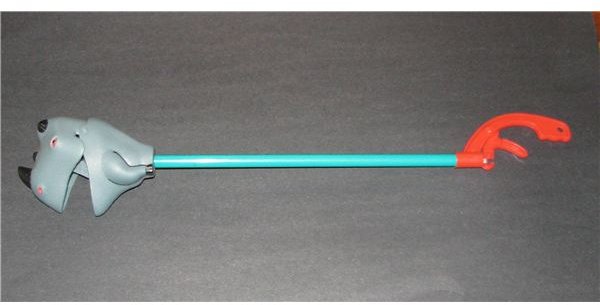Summer Activity Ideas to Increase Coordination, Hand Dexterity, and Overall Strength in Children
The Benefits of Water Play
Occupational therapists often recommend swimming not only as a form of exercise but as a fun way to develop coordination between the right and left sides of the body as well as increasing core strength. Since water is resistive- swimming movements stimulate the sensory receptors in joints and muscles – promoting body awareness. The weight of water also provides sensory stimulation when a child engages in the following activities:
- Carrying buckets of water to dump into a pool or water table
- Watering plants
- Squeezing a rubber glove filled with water
- Throwing water balloons at a target
Summertime means bubble time and a home-made solution can easily be made by mixing one cup of water and one-half cup of dish washing liquid. Popping bubbles while on movement apparatus such as swings or a trampoline promotes visual tracking skills. Stepping on bubbles while walking across a bench, rope, or balance beam on the grass develops balance. Occupational therapy summer activity ideas should also include manipulatives that promote hand strength and coordination. Suggested activities include:
- Squeezing squirt bottles to wash away paint
- Squeezing the lever on plant misters or water guns
- Winding up water toys to move in basins
- “Painting” on a building with water
- Scooping up toys from a basin using a small net
Tactile Activities That Develop Skills
Tactile activities develop body awareness, discrimination skills and coordination. They are extra fun when used outdoors where making a mess is not a problem and students can experience a variety of textures such as grass, sand or pebbles. Occupational therapists may choose to work with a group of students outdoors as they take turns traveling across interesting surfaces (or having relay races) that involve:
- Wheelbarrow walking (hands on ground with ankles supported by helper)
- Walking like a bear (with feet and hands on ground)
- Crawling like a snake
- Rolling down hills
- Jumping like a frog
OTs may incorporate hand activities during these movement games by tossing objects with various textures (i.e. pine cones) and asking students to gather them while using the movements described above.
Filling a large basin with leaves or sand and asking the students to find hidden toys is a wonderful way to develop tactile awareness. Provide spoons, animal grabbers or clothespins to use to remove the toys and drop into a container.
Examples of Games
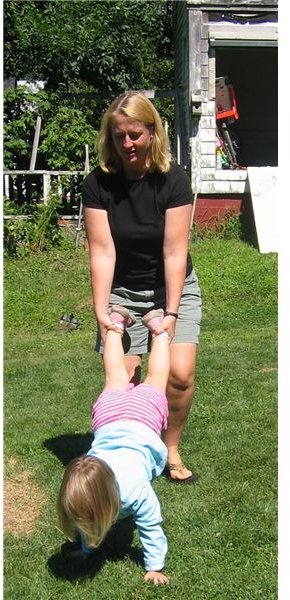
Summer Arts and Crafts
Objects and activities associated with summertime can be incorporated into arts and crafts projects. Include lots of practice cutting, taping, gluing and folding. Paper lanterns can be created in bright colors to decorate a pool party. Follow these steps:
- Fold paper in half by bringing the top of paper to bottom
- Draw lines beginning at the fold, stopping one inch from the edge
- Form lantern shape, attaching the ends with tape as shown in the photo
This is a great activity for 4-5 year olds who need practice cutting on a straight line. Be sure to provide small scissors that fit inside small hands-such as the learning scissors shown in the photo. Some children may need to practice cutting on a straight line before making the lantern by cutting “uphill” on a strip of paper taped to the wall. This position encourages correct wrist position.
Other summer craft ideas include:
- Lacing flower or animal shapes (the fish shown in the photo is made of a larger and smaller shape laced together)
- Origami flowers (for older students)
- Cutting fruit with a butter knife and arranging to form a face as an edible craft
- Painting plant pots
Creating and playing with a fishing game develops skills to manipulate paper clips. Adults or students can cut fish shapes out of sturdy paper or plastic. The students make an eye by punching a hole. Then they attach paper clips. The fishing rod is made by tying a magnet to the end of cord which is suspended from a “pole” (using a stick). The longer the cord, the more challenging it will be to catch fish. Using this activity while the student is prone over a low swing develops eye-hand coordination and postural control.
Images of Fine Motor Practice
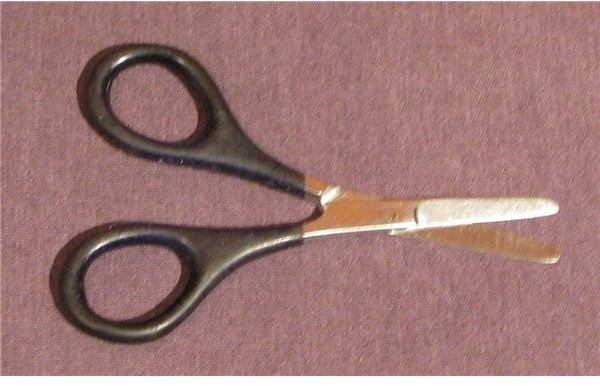
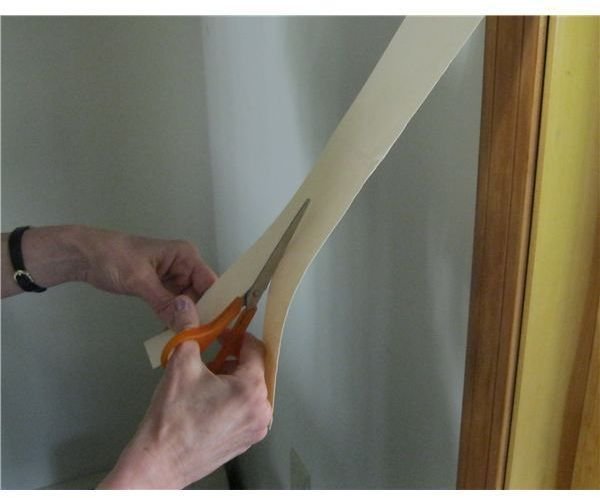

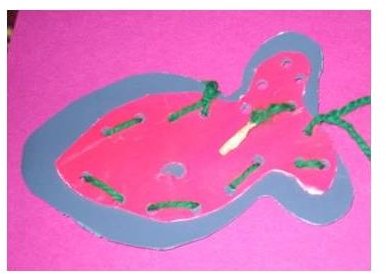
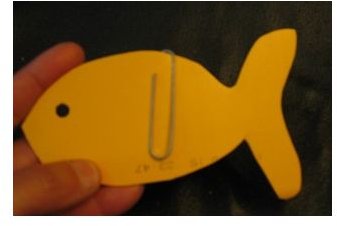
All of the content and activities in this article are based on the author’s professional experience. Photographs have been provided by the author.
